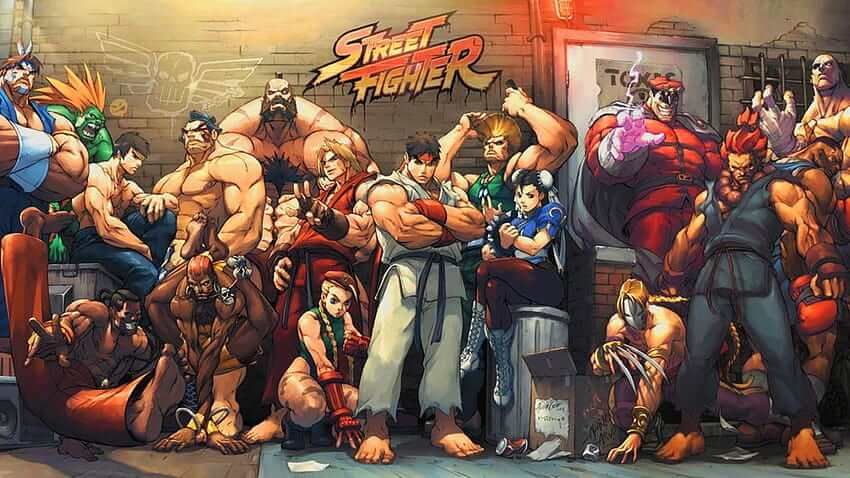Fighting games have always been at the forefront of video game graphics innovation, paralleling the advancements in gaming technology. From the humble beginnings of pixelated characters of early arcade cabinets to the stunningly realistic visuals of modern gaming consoles, the visual landscape of fighting games has undergone a remarkable transformation, captivating players and pushing the boundaries of artistic expression. This journey through the annals of gaming history not only showcases technological advancements but also reflects the changing tastes and expectations of gamers worldwide. Will you join us on this journey through the evolution of game graphics?
The Pixelated Pioneers
We could not start in any other way than with the origins of video games. In the early days of gaming, limited hardware capabilities restricted developers to simple sprites and backgrounds. Titles like "Street Fighter" and "Mortal Kombat" laid the foundation for the genre with their simplistic yet engaging visuals and basic animations. Despite their rudimentary graphics, these games captured the imagination of gamers worldwide, sparking a fervour for virtual combat that continues to this day.
A Transition to 3D Graphics
The transition from 2D to 3D graphics marked a significant turning point in the evolution of fighting games. Titles like "Tekken" and "Virtual Fighter", among many others, embraced this new dimension, introducing fully rendered 3D environments and thoroughly detailed characters. The immersive nature of 3D graphics elevated the gaming experience, where players now marvelled at the fluid movements and complex details of their favourite fighters. This new dimension not only transported players into dynamic arenas where every punch and kick felt palpable but also expanded the creative possibilities for developers and elevated the visual fidelity of the genre as a whole.
The Art Flourishes
As technology continued to advance, so too did the artistry of fighting game graphics. Developers began to experiment with cel-shading, a technique that emulates the look of a hand-drawn animation. Games like "Guilty Gear" and "Dragon Ball FighterZ" embraced this style, creating visually striking worlds populated by stylised characters with vibrant colours and dynamic linework that are remindful of a comic book coming to life. The result was such a visual feast for the eyes that appealed to both hardcore fans and casual observers alike, cementing the genre's reputation as a bastion of artistic expression.
Arcade & Casino Games
The arrival and establishment of gaming graphics find its core public in fighting games, but this doesn’t mean it doesn’t extend to a diverse array of game genres as well. Online casino games, such as slots, poker, and roulette, have undergone a visual revolution of their own, leveraging cutting-edge technology to create immersive and engaging experiences for players. Similarly, arcade classics like "Pac-Man," "Tetris," and "Space Invaders" have seen graphical enhancements and adaptations across various platforms, from retro-inspired pixel art to modernised 3D renditions. These games, while distinct from fighting games, share a common thread of pushing the boundaries of graphical fidelity and captivating players with visually stunning experiences.
Pushing the Limits
In recent years, the pursuit of photorealism has become a driving force in the world of gaming. Among many others, games like "Mortal Kombat 11" and "Street Fighter V" push the boundaries of graphical fidelity, blurring the line between virtual and reality. Every detail, from the texture of clothing to the expression on a character’s face, every scar, every wrinkle, and every drop of sweat, is meticulously rendered, creating a sense of immersion that is truly breathtaking. All the range of characters come to life in stunning detail, offering players an unparalleled level of realism and immersion in their virtual battles.
The Future of Fighting Game Graphics
As we look to the future, the evolution of fighting game graphics appears promising, showing no signs of slowing down. With the advent of next-generation consoles and advancements in technologies like ray tracing and machine learning, the possibilities are limitless. From hyper-realistic visuals to innovative art styles, the club of creativity continues to expand, offering players an ever-growing array of visual delights to behold.
Conclusion
The evolution of fighting game graphics is a testament to the ingenuity and creativity of game developers around the world. From humble beginnings to dazzling heights, the genre has continuously pushed the boundaries of what is possible, captivating audiences with its stunning visuals and immersive experiences. As technology continues to advance, one thing is certain: the arena of fighting games will remain a showcase for the best that gaming has to offer, inspiring awe and wonder for generations to come.




















